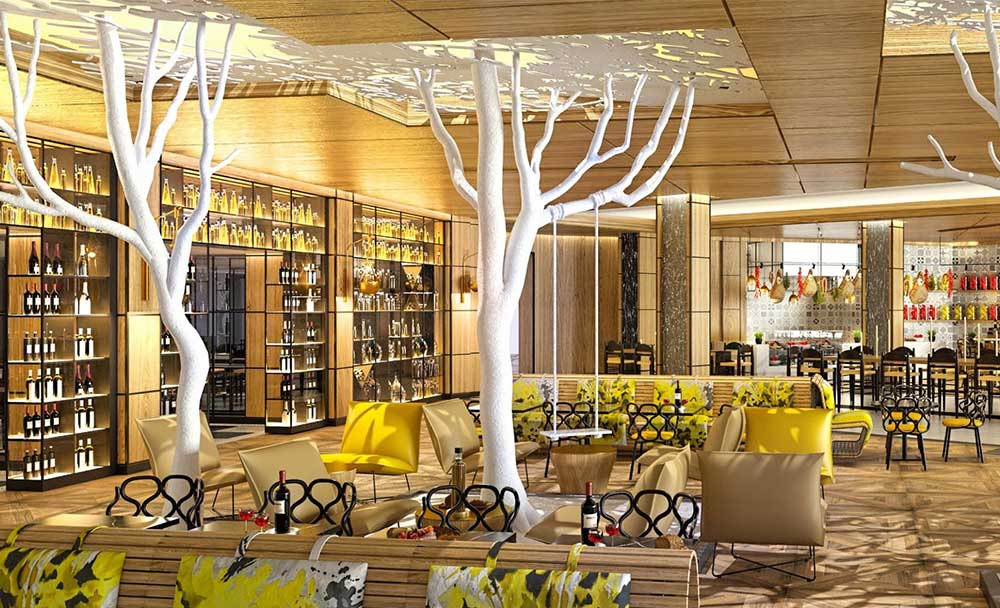
Interior design and its influence on well-being and mood
Interior design has a greater emotional influence on us than we think. A good space design not only defines the aesthetics of a space, but also affects our mood and sense of well-being. For these reasons, a well-designed space by interior design specialists can boost your business’s productivity and even improve the mindset of both customers and employees. In this article we explain how colours, lighting, distribution and materials influence how you feel day after day:
Emotions and colours in decoration
It’s well known that colours have a significant impact on our emotions. Warm tones such as yellow or orange can generate energy and creativity, while cold shades such as blue or green promote relaxation and concentration. Choosing the right colour palette is key in interior design to improve mood and encourage certain attitudes or actions, as the needs of office workers differ from those of customers in a shop or restaurant.
Well-being and lighting in interior design
If colours are key to optimising your spaces, lighting is no different. Natural light boosts the production of serotonin, commonly known as the happiness hormone. Therefore, work spaces with large windows or adjustable LED lighting can reduce visual fatigue and stimulate productivity. For a welcoming atmosphere, interior design experts often use a combination of warm and cool lighting depending on the time of day or the purpose of the space.
Harmony and distribution of spaces
Clutter causes stress and discomfort, which is why an organised and functional design supports personal well-being. Open, uncluttered and well-organised spaces make movement easier and create a sense of spaciousness and harmony. Applying feng shui principles or embracing minimalism can help make a space’s design more balanced and harmonious.
Natural textures and materials
Natural materials, such as wood, cotton textiles or stone surfaces, create a sense of connection with nature, promoting calmness and a feeling of comfort. Other elements, like plants, also add a natural touch that can be highly beneficial in certain designs, depending on the space’s purpose, industry and target audience.
Personalisation of spaces
Incorporating personalised elements, such as artwork, varied wall decor, unique tables, etc. makes the space reflect your identity, creating emotional comfort while also adding a distinctive touch that sets it apart from other spaces with similar objectives. In sectors like hospitality or foodservice, interior design must be based on a 360º commercial space decoration project that aligns with the brand, making it unique, welcoming and recognizable.
Moinsa, interior design professionals

As we’ve seen, interior design can have a major effect on your well-being and also your mood. From the choice of colours and type of lighting to the layout of the furniture, each detail counts. Therefore, if you are looking to improve your business, optimising the design of commercial spaces is essential.
Ready to transform your space with professionals who are experts in interior design? Trust in Moinsa, and you will notice the difference. Request information or a no-obligation quote.
